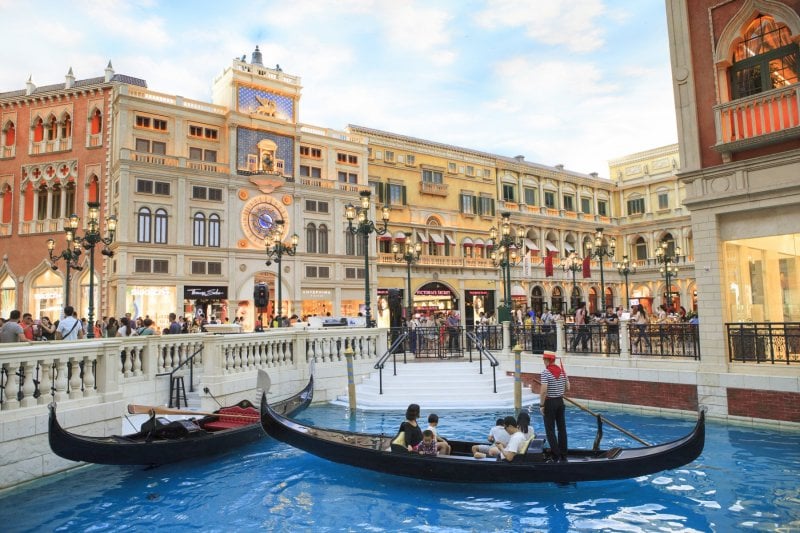
The Difference Between Chinese and American Urbanism
Urbanism is an often-used phrase with little thought about what it actually means, particularly when relating to the two entirely different countries of China and the United States. Readers of this blog can discover why China has some of the fastest-growing cities in the world, and how some of them are built on American models. China's population is quickly becoming more urbanized, especially compared to North America, where the rate of growth and associated migration is much slower. The exciting articles in this blog will cover changes as they happen with the most up to date news.
The Impact of Urbanization on American Agriculture
15 Nov 2021
Although many might argue that increasing urbanization in the US is inevitable, a key question is how does it affect agricultural land? There are both challenges and opportunities for American farmers. The loss of land can also impact food production, leading to a worry of future crop shortages.
The Fastest Growing Cities in China
9 Oct 2021
As 60% of Chinese citizens live in cities, there is a need for regions to expand very quickly. One example is Foshan, a city that most people have not heard of but is now home to over seven million people. Thus, the urbanization of China is a massive project.
The Dying Era of American Inspired Buildings in China
8 Aug 2021

As you view the shore of the Dongting Lake in the northeastern Hunan Province of China, you see the changing architectural styles that depict very different eras. You see Mao-era factories, a Ming pavilion, and reform-era tenements with the high-rise towers of New China behind them.
Different versions of Western architecture are present throughout China. Since 2000 whole towns were built like Thames Town in Shanghai and Little Italy in Shenzhen. The West refers to many countries west of China, including The United States of America.
The name for the USA in Chinese means Beautiful Country, and during the reform era, the USA had captured the collective Chinese imagination with its music and movies. Americana also grabbed the vision of architects, and American-inspired buildings started to emerge.
The popularity of Western architecture has since faded, as did the construction of buildings viewed as being weird. The names of buildings with Western-sounding names have reportedly also changed throughout China.
The buildings themselves still stand proud. In particular, the US Capitol Building was associated with power and elegance and became a paradigm that Chinese architects rushed to imitate. The Chinese, in general, do not know the difference between the White House and the Capitol Building of the USA. They refer to both as the White House, and there are a few across China.
Chinese Las Vegas
It might come as a surprise to find out that the world's gambling capital is Cotai, situated in Macau, China. Cotai is a 2-mile strip of reclaimed land on which a new Las Vegas Strip of diversified mega casino-resorts has been built. There are more than ten casino resorts on The Strip, and you can read more about casinos at American Casino Guide.
Many other White Houses have fallen into neglect, neglected and abandoned, and await demolition. The next era for China has begun, and with it, a new era-specific architectural style will be born.
The White Houses of China
The Yingguan District Government Building built in Fuyang in the Anhui province strongly resembles the United States Capitol building. It is known as the White House. This famous building cost nearly 30 million yuan and was run by the Communist Party chief nicknamed the White House Party Chief.
Many courts adopted the dignified and symmetrical appearance of the Capitol Building as it reflects the intent and image of the court as standing for fair and just law enforcement.
Some hotels have chosen the fancy and astute shape of the White House to attract more affluent guests.
Universities believed that the American-type buildings would assist students in understanding world culture better. The Geely University in Beijing has a US Capitol Building-inspired roof on the university library. The dome roof has since been removed to be remodeled to create distance from the imitated American model.
Some people have applied White House aesthetics to cultivate business. A distillery in Fuyang in the Anhui province modeled the public restroom after the Capitol Building. People are known to come from afar to find this toilet. A farmer even modeled his private villa after the US Capitol Building.
Is China Losing Its Identity?
22 Jul 2021
The new megacities in China may be said to be necessary for economic prosperity. Still, obliterating smaller towns and villages is destroying some of the history and tradition of the country. Instead, massive skyscrapers are taking over; huge anonymous buildings where there is no sense of community or family history.